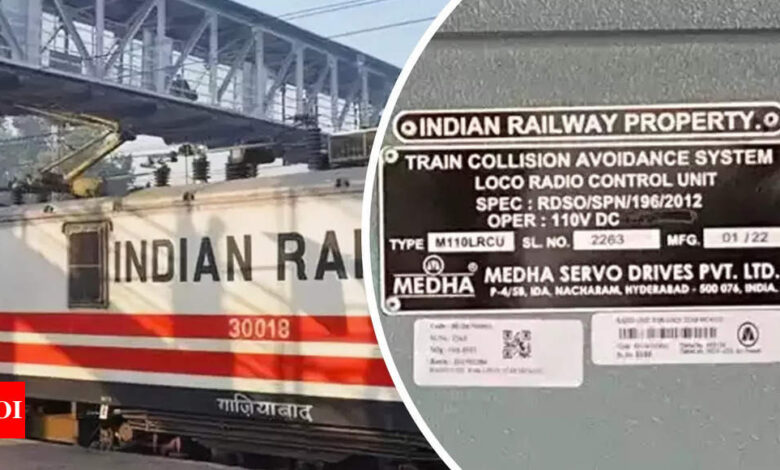Big achievement for Indian Railways! Indigenous Kavach anti-train collision system tested successfully at 160 kmph speed

[ad_1]
The indigenous Kavach anti-train collision system has been developed by the Research Designs and Standards Organisation (RDSO).The system can automatically apply brakes in case of an emergency when a train driver or loco pilot fails to respond in time.
According to a PTI report, the Kavach system was installed on a semi-high-speed engine, WAP-5 under the supervision of Kush Gupta, Deputy Chief Signal and Telecommunication Engineer at North Central Railway. On January 19, the engine was tested on the Palwal-Mathura section, reaching a speed of 160 kmph, according to Prashashti Srivastava, PRO of Agra Rail Division.
Srivastava explained that the locomotive’s driver was instructed not to apply brakes upon encountering a red signal. Our aim was to assess whether Kavach would autonomously apply brakes, bringing the train to a stop before the signal, she was quoted as saying.
The trial aimed to test if the Kavach system would apply brakes on its own and bring the train to a halt before a red signal. The locomotive stopped 30 meters before the signal, demonstrating the effectiveness of the Kavach system.
The Indian Railways is in the process of implementing the Kavach system across its network to enhance operational safety. WAP-5 locomotives, capable of pulling passenger coaches at 160 kmph, are currently being used for the trial. The trial will soon be repeated on a locomotive with passenger coaches. WAP-5 locomotives are used in premium trains such as Shatabdi and Gatimaan Express.
The Agra Division has developed a complete Kavach network on the 80-km stretch between Mathura (excluding station) and Palwal, including the placement of RFID tags on railway tracks and the installation of stationary Kavach units at various locations.
According to RDSO officials, the Delhi-Agra stretch is the only part of the rail network where trains can run at a maximum speed of 160 kmph. Trains on all other sections in India have a maximum speed of 130 kmph.
The Kavach system is already functional in three sections on a 1,465-km route and in 139 locomotives in South Central Railway. However, trials at speeds above 130 kmph are necessary as the Indian Railways looks to introduce semi-high speed trains.
The Kavach system not only helps loco pilots avoid signal passing and overspeeding but also enhances safety and efficiency during inclement weather conditions.
#Big #achievement #Indian #Railways #Indigenous #Kavach #antitrain #collision #system #tested #successfully #kmph #speed






